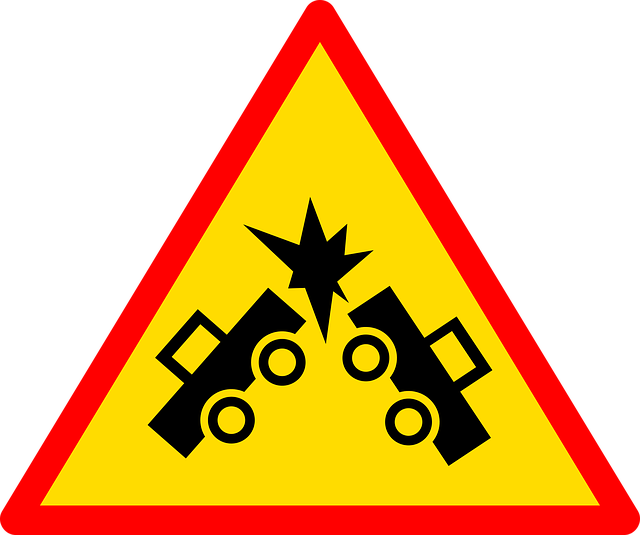Collision coverage is essential auto insurance that protects against accident costs but has exclusions for wear and tear, natural disasters, and intentional damage. Local insurance providers offer tailored collision policies considering regional risks, faster claims processing, and superior customer service. In urban areas, specialized providers like [Provider 1] and [Provider 2] excel in comprehensive collision coverage. Choosing between national and local insurers depends on priorities: consistency vs. region-specific risk tailoring. Optimal selection involves evaluating policy protections, driving habits, area risks, body shop rates, and comparing quotes while aiming for peace of mind and efficient vehicle repair. Bundling policies and maintaining a clean driving record can reduce costs.
Looking for reliable collision insurance to protect your vehicle? Understanding local providers offers a unique advantage, providing tailored coverage and swift claims handling. This comprehensive guide explores the intricacies of collision coverage, focusing on what it entails, exclusions, and how local insurers excel. Discover top local companies in [Your Region/City], compare them with national options, and learn strategies to select the perfect fit for your needs while saving on costs through discounts.
Understanding Collision Coverage: What It Covers and Exclusions

Collision coverage is a crucial aspect of auto insurance, designed to protect policyholders from financial loss in the event of a vehicle collision. This type of coverage typically pays for repairs or replacement of your vehicle if it’s damaged in an accident, no matter who’s at fault. It also covers the cost of towing and rental cars while yours is being repaired.
However, collision coverage isn’t without its exclusions. Common exceptions include damage caused by wear and tear, natural disasters, and intentional acts. Additionally, if you’re at-fault for the accident, your collision insurance will usually cover only a portion of the repair costs, determined by the policy’s deductibles. Understanding these details is essential when choosing the right collision coverage to suit your needs.
Benefits of Local Insurance Providers for Personal Vehicles

Choosing a local insurance provider for your personal vehicle offers numerous advantages. One of the key benefits is access to tailored collision coverage that understands and caters to your specific regional needs. Local insurers often have deeper insights into common accident hotspots, weather patterns affecting road conditions, and other unique factors that can impact vehicle damage in your area. This knowledge enables them to offer more customized collision coverage options, ensuring you’re protected against the risks most relevant to where you live and drive.
Additionally, dealing with a local insurance provider can lead to faster claims processing times and better customer service. These companies often have smaller, more agile operations compared to national or multinational corporations, allowing for quicker response times when you need them most. Local providers are also typically more invested in their communities, leading to a higher level of personalized attention and support throughout the entire claims process.
Top Local Collision Insurance Companies in [Your Region/City]

In the bustling landscape of [Your City], ensuring comprehensive collision coverage for your vehicles is paramount. Several local insurance providers stand out for their dedicated services and extensive collision insurance plans. Topping the list, [Provider 1] has carved a niche for itself by offering tailored collision policies that cater to diverse needs. Their robust network of repair shops and 24/7 claim assistance makes them a preferred choice among residents.
Another notable mention is [Provider 2], renowned for its innovative approach to collision insurance. They provide advanced digital tools for policy management and offer transparent, no-hidden-fee plans. With a focus on customer satisfaction, [Provider 2] ensures that every collision incident is handled efficiently, minimizing the hassle and stress for policyholders.
Comparison: National vs Local Insurers – Which Offers Better Collision Protection?

When considering collision coverage, a key decision is whether to choose a national or local insurer. National insurers offer a uniform policy across states, providing consistency but potentially lacking localized knowledge. Local insurers, on the other hand, are attuned to regional risks and driving conditions, which can translate to more tailored policies and better claims service.
While national companies may have broader resources and a reputation for reliability, local providers often excel in personalized customer service. They understand the specific needs of their community, whether it’s navigating seasonal weather patterns or addressing unique road conditions. This localized expertise can result in more efficient claims processing and a smoother experience during a collision repair process.
How to Choose the Right Local Collision Coverage for Your Needs

When selecting the right local collision coverage, it’s crucial to evaluate your specific needs and preferences. Start by understanding the scope of protection offered by different policies. Collision insurance typically covers repairs or replacements for your vehicle after a collision, regardless of fault. Consider factors like your vehicle’s make and model, age, and repair costs in your area. Researching local body shops and their average rates can provide valuable insights into potential out-of-pocket expenses.
Next, assess your driving habits and the type of areas you frequently travel through. If you commute long distances or drive in regions with high accident rates, opt for a policy with higher limits to ensure adequate protection. Compare quotes from multiple local providers, keeping an eye on deductibles and coverage amounts. Remember, the right collision coverage should offer peace of mind while aligning with your budget and ensuring your vehicle’s repair needs are met efficiently.
Claim Process and Timeframes: What to Expect After a Collision

After a collision, understanding the claim process and timelines is crucial for smooth navigation through the aftermath. The first step involves contacting your insurance provider as soon as possible to report the incident. During this initial conversation, you’ll provide details about the collision, including the date, time, location, and other parties involved. Your insurer will guide you on the next steps, which may include filing a police report or documenting damage with photographs.
The claim process typically begins with submitting a formal claim form, along with any relevant documentation, such as police reports, repair estimates, or medical bills if applicable. From there, your insurance company will assess the damages and verify the validity of your claim. Depending on the complexity of the case and the extent of the collision coverage, this can take several days to a few weeks. Once approved, they’ll provide you with options for repair or replacement, ensuring that your vehicle is restored to its pre-collision condition under the terms of your collision coverage.
Tips for Lowering Costs: Discounts and Savings on Local Collision Insurance

When looking for collision insurance, one of the primary concerns is minimizing costs. There are several strategies to lower your premiums and save money on your coverage. One effective approach is to bundle your collision coverage with other types of insurance policies from the same provider. Many insurers offer discounts when you combine auto liability, comprehensive, and collision coverage, so consider bundling to take advantage of these savings.
Additionally, maintaining a clean driving record is pivotal in reducing collision insurance costs. Safe driving habits, avoiding speeding tickets, and steering clear of at-fault accidents can significantly impact your premiums. Some companies also provide discounts for safe drivers, so review your policy options and choose insurers that recognize and reward responsible driving behavior.
